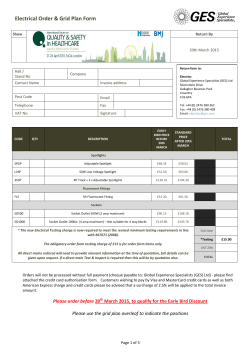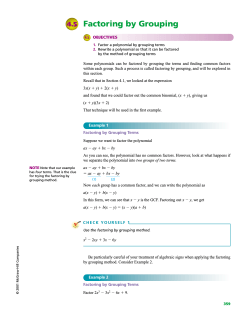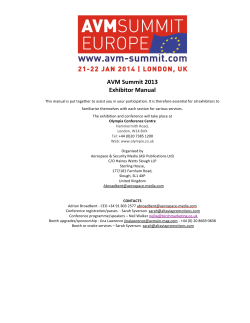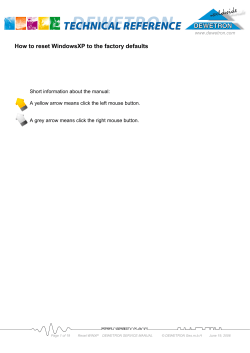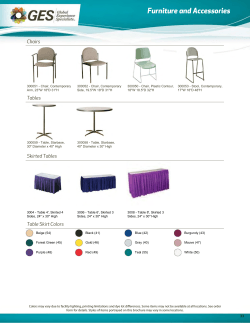
AH Kashan Grouping Evolutionary Strategy (GES)
Grouping problems and their applications
Grouping Genetic Algorithm (GGA)
Evolutionary Strategy (ES)
Grouping Evolution Strategy
Experimental Results
A.H. Kashan
Grouping Evolutionary Strategy (GES)
2
Partitioning a set (V) of n items into a collection of
mutually disjoint subsets (groups, Vi) such that:
D
V Gi , Gi G j , i j.
i 1
Partition the members of set V into D (1≤ D ≤ n)
different groups where each item is exactly in one group
Ordering of groups is not relevant
well-known problems as grouping problems:
graph (vertex/edge) coloring, bin packing, batch-processing
machine scheduling, line-balancing, timetabling, cell
formation, vehicle routing etc.
A.H. Kashan
Grouping Evolutionary Strategy (GES)
3
Two main representation schemes:
Number encoding: each item is encoded with a group ID, for
example 2 1 3 2 1
Redundancy: example,
Individual 1: 2 1 3 2 1
Individual 2: 1 2 3 1 2
{2, 5}{1, 4}{3}
{1, 4}{2, 5}{3}
Group encoding: items belonging to the same group are placed
into the same partition, for example {2, 5}{1, 4}{3}
Search operators can work on groups rather than items
Groups are the meaningful building blocks of solutions
A.H. Kashan
Grouping Evolutionary Strategy (GES)
4
Problem representation:
2 , 5 4, 1
3
≡
Item Part
B A C B A
Group Part
: A B C
The Mutation: elimination of some existing groups,
insert the missing items by a problem depended heuristic
A.H. Kashan
Grouping Evolutionary Strategy (GES)
5
A.H. Kashan
Grouping Evolutionary Strategy (GES)
6
Darwin’s theory: the most important features of the
evolution process are inheritance, mutation and selection
Main steps of (μ+)-ES:
Initial solutions: t = Xt1 , Xt2 , ..., Xtμ
Repeat until (Termin.Cond satisfied) Do
A.H. Kashan
Mutation: create a set Qt = Yt1 , Yt2 , ..., Yt by using mutation
New population t +1 : the μ best of the μ+ candidate solutions
in t Q t
Replace the current best solution if it is better than the best solution
found so far
Grouping Evolutionary Strategy (GES)
7
Xti = xti1, xti2, ..., xtid a solution of current population
Yti = yti1, yti2, ..., ytid an offspring obtained via mutation
Zd = t Nd (0, 1)
t : distance of an offspring candidate solution from the parent
t is varied on the fly by the “1/5 success rule”
This rule resets t after every k iterations by
= / c if ps > 1/5
= . c if ps < 1/5
=
if ps = 1/5
where ps is the % of successful mutations, 0.8 c 1
A.H. Kashan
Grouping Evolutionary Strategy (GES)
8
Difficulty with developing the grouping version of ES:
New Mutation Scheme:
Producing new real-valued solution vectors during search process using
Gaussian mutation in ES
Developing a new comparable mutation based on the role of the groups,
while keeping the major characteristics of the classic ES mutation
Discrete Search Space:
A.H. Kashan
ES is suitable for optimizing non-linear continuous functions but
grouping problems are all discrete.
We will show how we can keep the new mutation in continuous space
while using the consequences in discrete space
Grouping Evolutionary Strategy (GES)
9
The main steps of (1 + )-GES:
Initialization
Initial
solution
generation
Obtain
offspring via
NSG
No
Finish
A.H. Kashan
Yes
Has the
termination
criteria been
satisfied?
Selection of
best
individual
Grouping Evolutionary Strategy (GES)
10
Solution representation: solution X with DX groups as a
structure whose length is equal to the number of groups
Xi: 2, 3, 5
1, 7
6, 9, 4 9, 10
The first solution is generated randomly
A.H. Kashan
Grouping Evolutionary Strategy (GES)
11
Yti d = Xtd + Zd ; d = 1,...,D, i = 1,...,
(1)
The key idea is to use appropriate operators in the place
of arithmetic operators
Indeed, we have to determine how many items of current
groups (X td) must be inherited by the new groups (Y tid)
By reshaping (1) in the form of Yti d - Xtd = Zd,
Substitution of “-” operator with an appropriate one in
grouping problem
A.H. Kashan
Grouping Evolutionary Strategy (GES)
12
Similarity measure:
t
t
|Y
X
t
t
id
d|
Jaccard ' s Similarity (Yid ,X d ) t
|Yid X dt |
Distance/Dissimilarity measure:
t
t
|Y
X
t
t
id
d|
Jaccard ' s Distance (Yid ,X d ) 1 t
|Yid X dt |
Then, Gaussian mutation operator in GES is introduced
as follows:
Distance ( yidt , xdt ) z d
A.H. Kashan
Grouping Evolutionary Strategy (GES)
13
Zd values are unrestricted in sign but the range of
distance measure is only real values in [0, 1]
Appropriate source of variation:
With 0 and 1 as the lower and upper bound of candidate PDF
With flexible PDF that provides different chances for getting a
specific value in [0, 1] by means of some controllable
parameter(s)
The new mutation operator of GES:
Distance ( yidt , xdt ) Beta d ( t , t ),
d 1,..., D, i 1,...,
A.H. Kashan
Grouping Evolutionary Strategy (GES)
14
Fixing the value of t at a constant level 1, we only
consider t as the endogenous strategy parameter
Then, Distance ( yidt , xdt ) Beta d ( t , ),
d 1,..., D, i 1,...,
Ultimately, number of inherited items by each group of
new solution is:
nidt
Distance ( y , x ) 1 t Beta d ( t , )
|x d|
t
id
t
d
nidt (1 Beta d ( t , ))|x dt |
A.H. Kashan
Grouping Evolutionary Strategy (GES)
15
Inheritance Phase:
Post assignment Phase:
A.H. Kashan
Grouping Evolutionary Strategy (GES)
16
Two type of constructive heuristic:
First-fit
Best-fit
Comparison of the best solution out of new obtained
solution with the current solution (X t)
1/5-success rule: increase if the observed estimate of the
success probability exceeds a given threshold (Pt) during
G successive iterations and vice versa.
A.H. Kashan
Grouping Evolutionary Strategy (GES)
17
one-dimensional bin packing problem:
set of n items,
size of jth item is sj,
objective is to pack all items into the minimum number of bins
(groups) of capacity B
Comparisons: The GGA proposed by Falkenauer (a
steady-state order-based GA and its overall procedure)
Benchmark: ten problem instances via the URL:
http://www.wiwi.uni-jena.de/Entscheidung
Implementation: MATLAB 7.3.0, Pentium 4, 3.2 GHz of
CPU, 1 GB of RAM
A.H. Kashan
Grouping Evolutionary Strategy (GES)
18
GES
Problem
GGA
min num of bins
56
Time
(Sec)
517.4
HARD0
56
Time
(Sec)
103.7
HARD1
57
110.0
57
473.4
57
HARD2
57
105.8
57
446.1
57
HARD3
56
102.9
56
432.3
56
HARD4
57
110.5
58
452.9
58
HARD5
56
105.1
57
483.8
57
HARD6
57
104.0
57
440.4
57
HARD7
55
107.4
55
431.2
55
HARD8
57
106.2
57
465.7
57
HARD9
56
102.9
57
485.3
57
Average
56.4
105.8
56.7
462.8
56.7
A.H. Kashan
Bins
Bins
56
Grouping Evolutionary Strategy (GES)
19
© Copyright 2025

